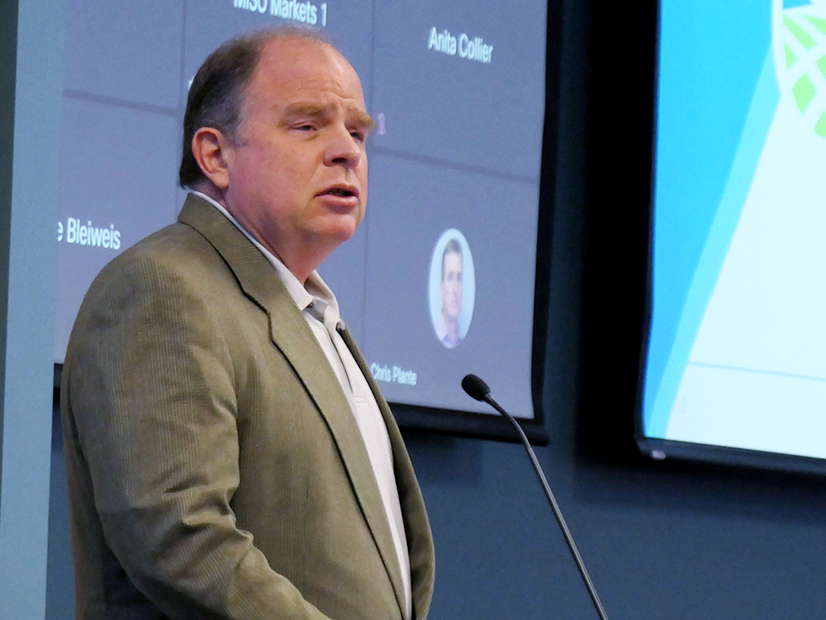CARMEL, Ind. — MISO said stakeholders have convinced it to design an off switch on its proposed $10,000/MWh value of lost load to use during extended load-shedding events.
Speaking at a July 9 Market Subcommittee meeting, MISO’s Chuck Hansen said the RTO will work a “circuit breaker” into its new VOLL for load shedding that lasts longer than four hours.
MISO early this year proposed using a $10,000/MWh value of lost load, nearly three times the amount of its current $3,500/MWh. (See MISO Wants $10K VOLL, a Nearly Threefold Increase.)
Hansen said MISO foresees using VOLL for “a few intervals, maybe up to a few hours” at a time, but not over several hours and days. He said MISO is considering placing a three-step maximum value on VOLL pricing during extended periods of load shedding.
MISO said it plans to cut VOLL in half to $5,000/MWh after four hours of load-shedding during a maximum generation emergency. When active load-shedding measures aren’t lifted in time for MISO’s 10:30 a.m. ET day-ahead market closing, MISO will extend the lower, $5,000/MWh VOLL into the next operating day. For load-shedding that continues into a second day and beyond, MISO will slash its day-ahead and real-time VOLL to $2,000/MWh for successive operating days.
“It’s something the market’s not seen. But if we get to that point, we believe it’s best to limit pricing on extreme, multiday events,” Hansen said. “We don’t anticipate such an event, but it’s prudent to prepare for such an event.”
Hansen said the $2,000/MWh step can continue indefinitely until the maximum generation emergency is terminated and normal operations resume. He said the RTO landed on the $2,000/MWh amount partly because it’s the hard cap on incremental energy offers in FERC’s Order 831.
Hansen said while MISO wants to set prices to incent responses, there’s a point where “high prices aren’t enhancing reliability and are creating a high financial risk to participants.” He said it’s not appropriate to have “indefinite” pricing at $10,000/MWh when it’s not helping resolve a situation.
Stakeholders months ago voiced apprehension over the potential for prolonged, prohibitively high prices and the cost exposure to customers under MISO’s proposed higher VOLL.
The Organization of MISO States “strongly” encouraged MISO to include a circuit breaker mechanism in its VOLL design. Entergy also said there’s “no disagreement that [a prolonged scarcity event] could occur and cause severe financial distress and harm.”
Hansen said the RTO is hoping to present “straightforward” tariff language at the August Market Subcommittee meeting and its proposed VOLL boundaries sometime in the fall.




